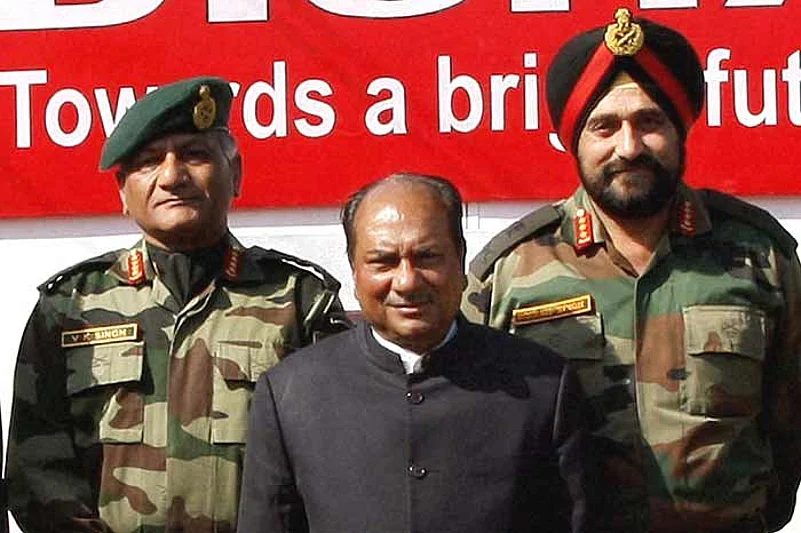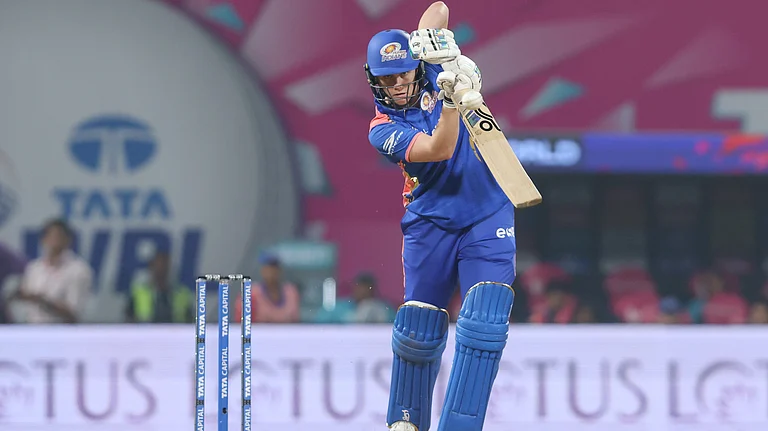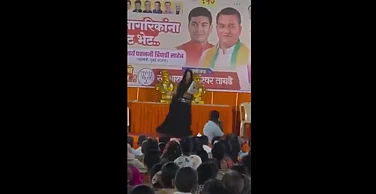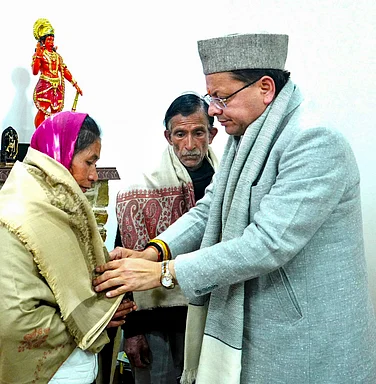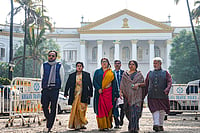Yet To Bite The Bullet
- Government yet to decide on Gen V.K. Singh’s YoB: 1950/1951
- His complaint to the defence ministry not answered
- No retirement warning letter issued yet to V.K. Singh to enable him to retire on May 31
- Army HQ waiting for legal order from govt to issue RWL
- Lt Gen Bikram Singh announced as next chief without deciding on present chief’s tenure
- MoD silent on RTI application asking if it has rejected V.K. Singh’s statutory complaint.
***
As opposed to public perception and what the government would like everyone to believe, the Chief of Army Staff, Gen V.K. Singh, is not riding into the sunset on May 31. There is as yet no clarity on whether the government has taken a decision on his year of birth which is probably why the general has still not been issued a retirement warning letter (RWL). This has led to the absurd situation of the government rushing in to announce the appointment of the next army chief, Lt Gen Bikram Singh, presently heading the Calcutta-based Eastern Command, without clearing the way for his smooth takeover. A close scrutiny of events currently playing out show that the current chief’s planned exit on May 31 may not pan out as expected. It may sound bizarre, but there’s a distinct possibility of having two army chiefs on May 31 if technical issues related to Gen V.K. Singh’s year of birth are not sorted out.

The government made the announcement of the next chief one day after Gen Singh, in an interview to Outlook (‘Had I resigned, it’d have been a self-goal’, March 12), which appeared on the stands on March 2, declared that he is not going to resign. The decision to appoint Lt Gen Bikram Singh as the next chief, made three months in advance instead of the routine precedent of two months, raised some eyebrows at the government’s undue haste. Gen V.K. Singh had said in the Outlook interview, “I see the age issue as something that I and the army have to address, and we’ll do it once we are given a legal order.” Retirement proceedings are set into motion only after an RWL has been issued, usually about eight months before the date of superannuation. In the absence of a “legal order” from the government, the Military Secretary’s branch in the army headquarters has not issued this RWL yet. Gen V.K. Singh’s year of birth in the AG branch records continues to be 1951, by which reckoning he should be retiring in March 2013. If Gen V.K. Singh decides to go with the legal position as of now and refuses to demit office in May, then the government will have to either sack him or withdraw Lt Gen Bikram Singh’s appointment.
The Supreme Court, in its order of February 10, had taken no position on the general’s date of birth and left it to the government to recognise one of the two DoBs. It had also allowed the government to withdraw the operative part of its December 30, 2011, order in which it had rejected Gen V.K. Singh’s statutory complaint to Union defence minister A.K. Antony seeking recognition of 1951 as his year of birth. Sources now say that, with the operative part withdrawn, the original statutory complaint stands revived. There has been no word from the Union ministry of defence (MoD) since then on what action it has taken on the statutory complaint. It has also chosen not to reply to an RTI application filed on March 5 in which applicant Col R.S. Rathi sought information on, among other things, whether V.K. Singh’s complaint had been processed further and rejected by passing a legal order before announcing his successor.
Col Rathi also wanted to know whether the Central government had recognised a particular DoB for the general in official records. His petition also wanted to confirm the procedure adopted by the government in selecting and appointing the COAS, an exercise which includes the consent of the President and if this procedure had been complied with before announcing Lt Gen Bikram Singh’s name? However, instead of acting on the RTI, the deputy secretary in the MoD has allowed the 30-day mandatory period for replying to RTI queries to elapse, without volunteering information on these questions. This has raised suspicions on the manner in which the government is handling this sensitive issue. It’s either this or the government is banking on the army chief’s “goodwill” to bow out quietly in May. However, this too is fraught because, as sources in the army chief’s camp say, “It will amount to a ‘compulsory’ retirement and not retirement on superannuation.” In other words, Gen V.K. Singh will be “forced to resign” and not retire. Both the options of sacking him or forcing him to go home may not be easy ones for the government, particularly now that the general has come to be perceived as an honest man fighting a corrupt system.
As if this were not enough, a public interest petition filed by retired naval chief Admiral L. Ramdas, former civil servant-turned-social activist M.G. Devasahayam, former Chief Election Commissioner N. Gopalaswami, a senior journalist and three general officers before the Supreme Court last week is seeking the quashing of Lt Gen Bikram Singh’s appointment “to protect the institutional integrity of the armed forces”. The petitioners believe the forces have today become a victim of blatant manipulation by the people in power to have an unhealthy control over the military. The SC still has to take a decision on whether to admit the petition, filed under Section 32 of the Constitution. If admitted, the PIL will open a can of worms, with far-reaching consequences for the nation’s defence set-up and also bring into sharper focus the entire sordid drama unfolding in recent years. For one, the petition has for the first time brought into the public domain the possibility of a ‘communal card’ having played a role in the appointment of an army chief (Gen J.J. Singh) . It also dissects the compulsions and methodology used to execute an arbitrary ‘Line of Succession’ in appointing army chiefs to suit vested bureaucratic and political interests in the government.
According to the PIL, the plot to limit V.K. Singh’s tenure to two years to enable Lt Gen Bikram Singh to succeed him had been codenamed Op Moses. It first came into operation when J.J. Singh initiated the “look down policy” to see how officers above brigadier level could be positioned as the COAS in the years to come. Thus four to five competent officers at the brigadier and general officer level were eliminated from the race by either overlooking or delaying their promotions to clear the path for Lt Gen Singh. Significantly, the petitioners have pointed out that defence minister Antony has repeatedly maintained that though he sympathised with V.K. Singh, “his hands are tied” as the pre-determined line of succession has to be maintained at all cost. His constant reference to orders from above remains baffling. J.J. Singh, despite being the architect of the line of succession, was governor of Arunachal Pradesh (appointed three months after he retired) and with no direct authority over the defence minister.
The petitioners have also questioned Bikram Singh’s suitability to lead the army in the light of his alleged involvement in a fake encounter circa 2001 to “gain personal advantage”. Seventy-year-old Abdullah Bhat, a civilian from Anantnag, was killed in that encounter and later branded as a foreign militant. His relatives, who have filed a petition in the high court, have alleged that the fake encounter was conducted by then brigadier Bikram Singh and that it was hushed up at his instance by the Army HQ. The case is currently before the J&K High Court. The MoD’s stand was that an internal enquiry had cleared his name. But strangely the details of this enquiry report have not been provided in response to Rathi’s RTI application. Adm Ramdas and Co’s PIL also cites how when Bikram Singh was commander of the UN peacekeeping force in Congo, men under his command had to be pulled out due to their sexual escapades in the region.
Like Rathi’s RTI application, the PIL also questions the non-resolution of Gen Singh’s DoB birth records by the MoD and that if it continues to be 31/5/1951, then should he not be retiring on March 3, 2013 and not in May this year? In which case, how has the government announced a successor? “The question of anyone taking over the said position does not arise,” the petitioners maintain. “The primary objective of the PIL in the Supreme Court,” says petitioner Devasahayam, “is to uphold and protect the institutional integrity of not just the armed forces but of the entire nation.”
The petitioners have asked for a stay on Lt Gen Bikram Singh’s appointment till a decision is taken on the issue. Whether the apex court admits the PIL or not, this unsavoury episode is not dying out anytime soon.






